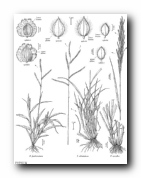
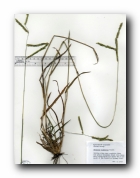
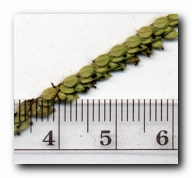
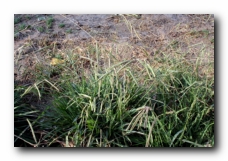
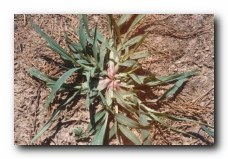
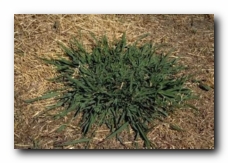
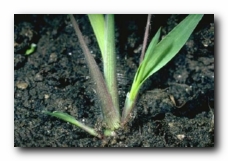
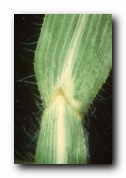
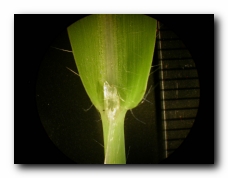
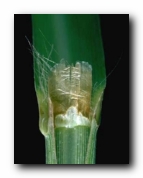
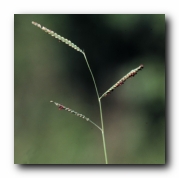
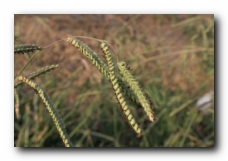
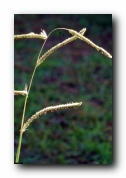
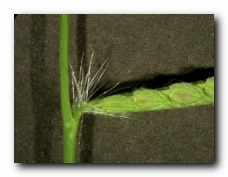
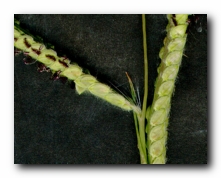
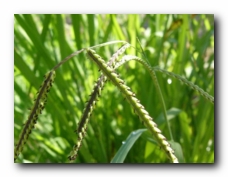
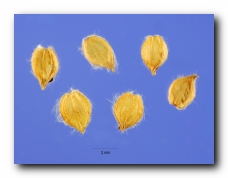
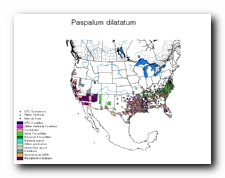
40" Rows:
Broadcast:
10 pounds pure live seed per acre
15 pounds pure live seed per acre
Sandy:
Loam:
Clay:
Low
High
High
Mature Plant: Robust plants, with prostrate or ascending leaves arising from tillers and short, shallow rhizomes. Most vegetative characteristics are similar to those of seedling plants. Mature leaf blades are flat, 4 to 12 in (10 to 30 cm) long by 1/4 to 1/2 in (6 to 15 mm) wide, and lack hairs, except for a few long hairs at the collar. Leaf margins are finely hairy and rough. Sheaths lack hairs (except for the few, older leaves), are strongly compressed, with a prominent midvein, and may be tinged red with age. The collar is broad, light green, smooth, often with long hairs at the edges. Tillers are stout and do not root at the nodes.
Special Notes: